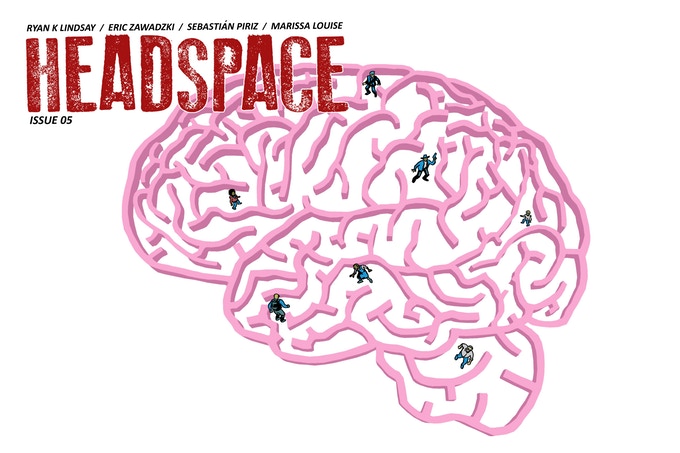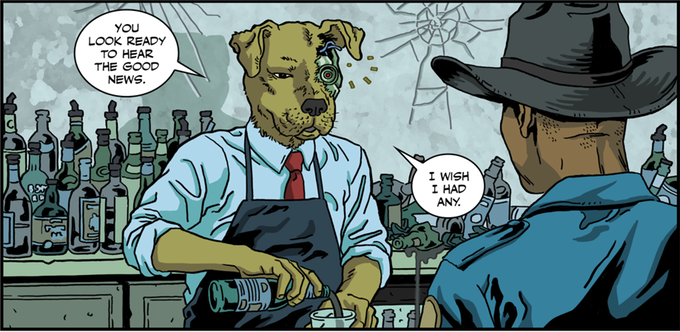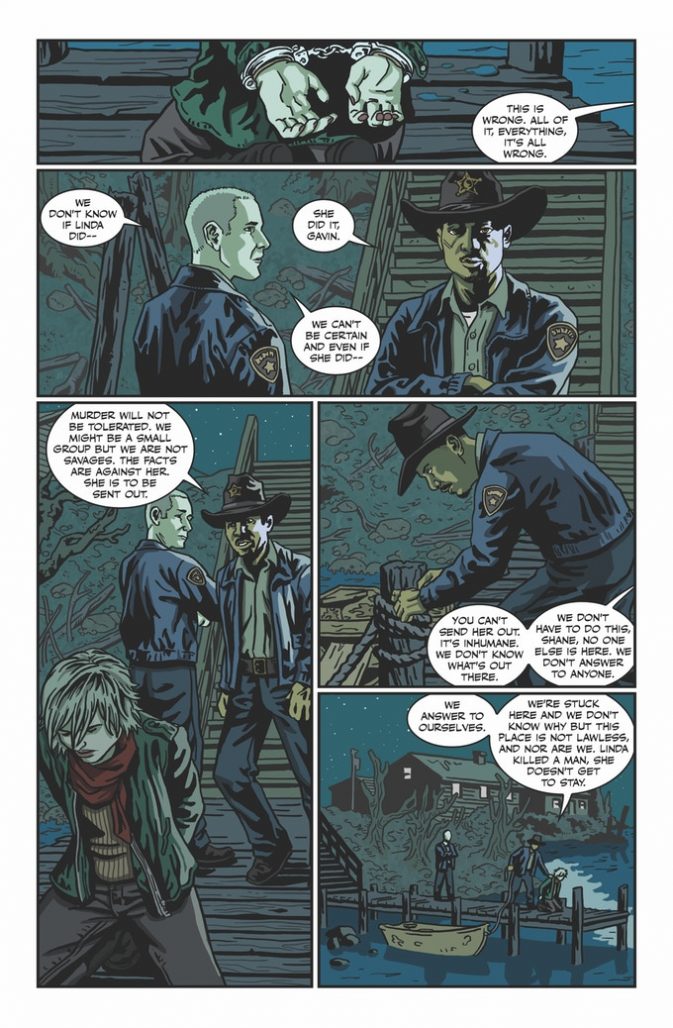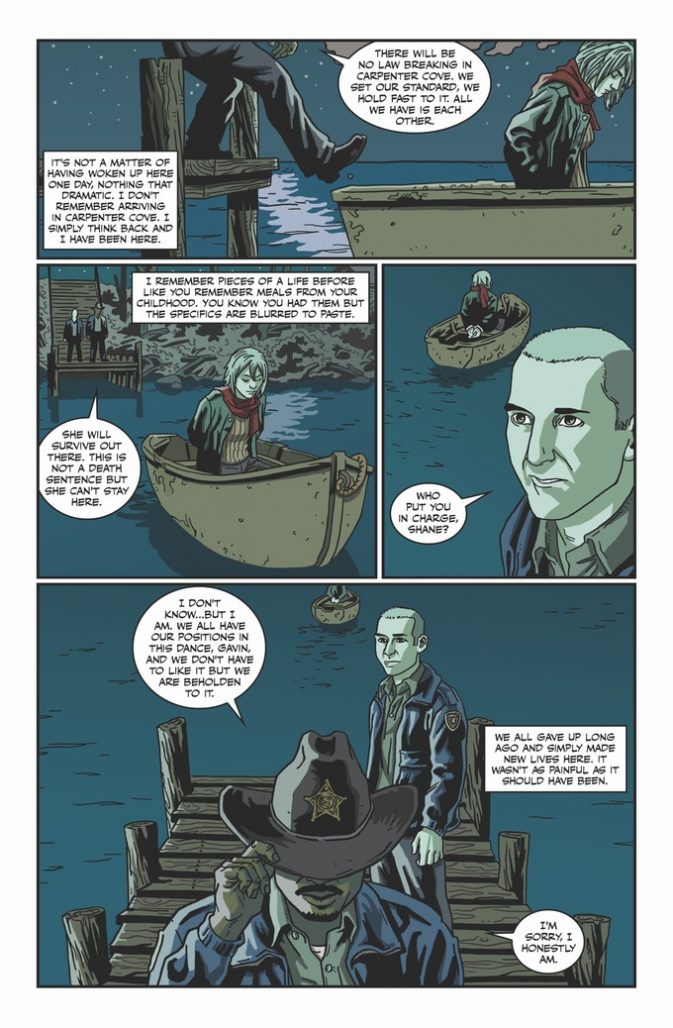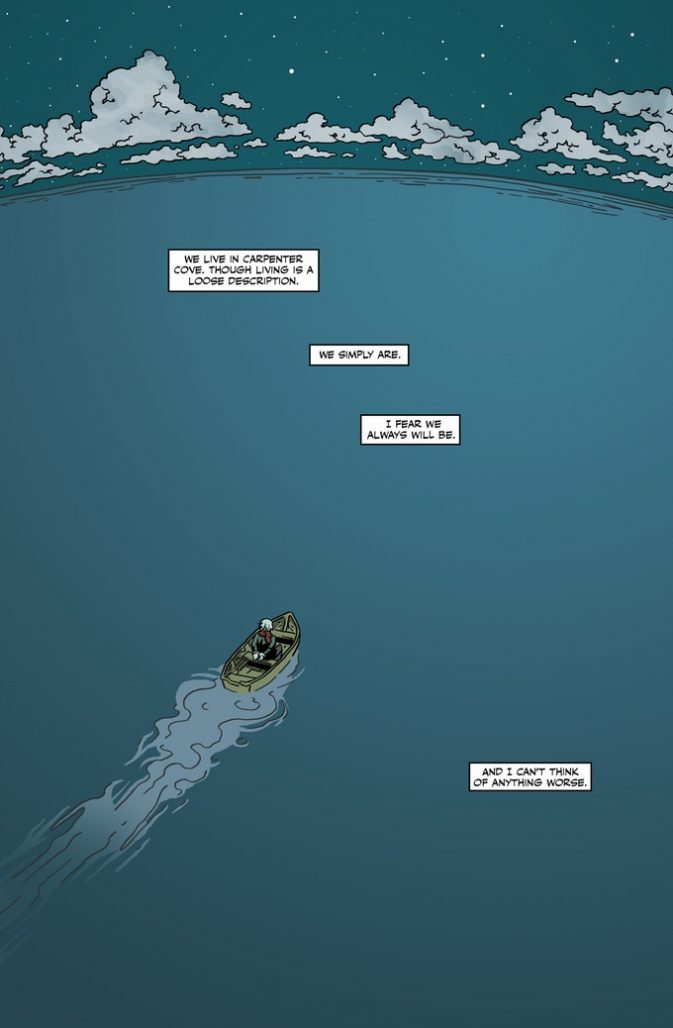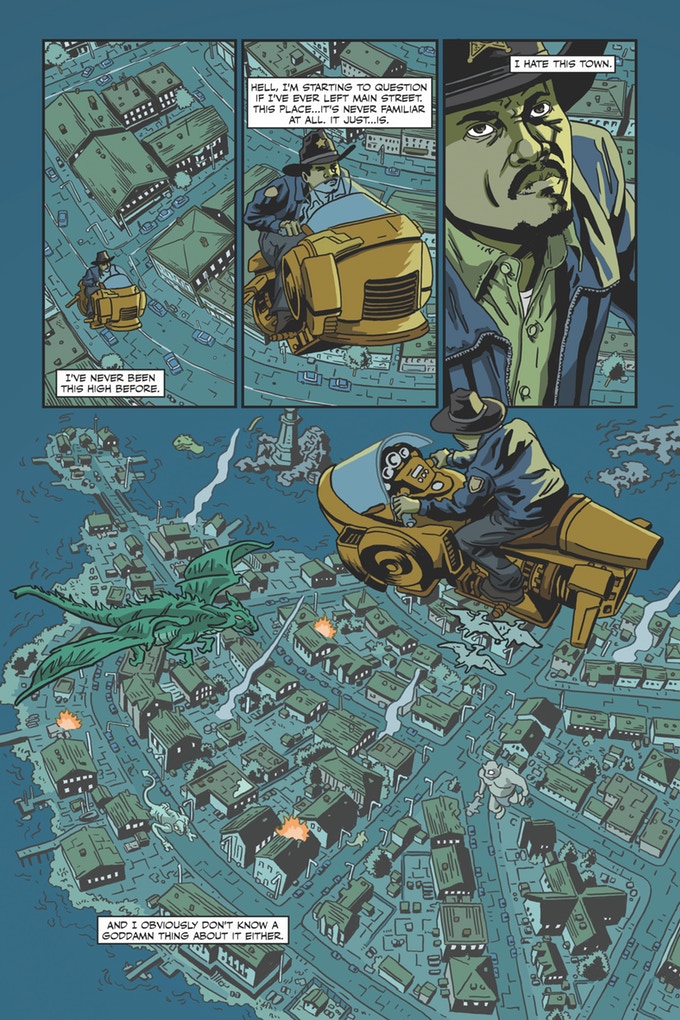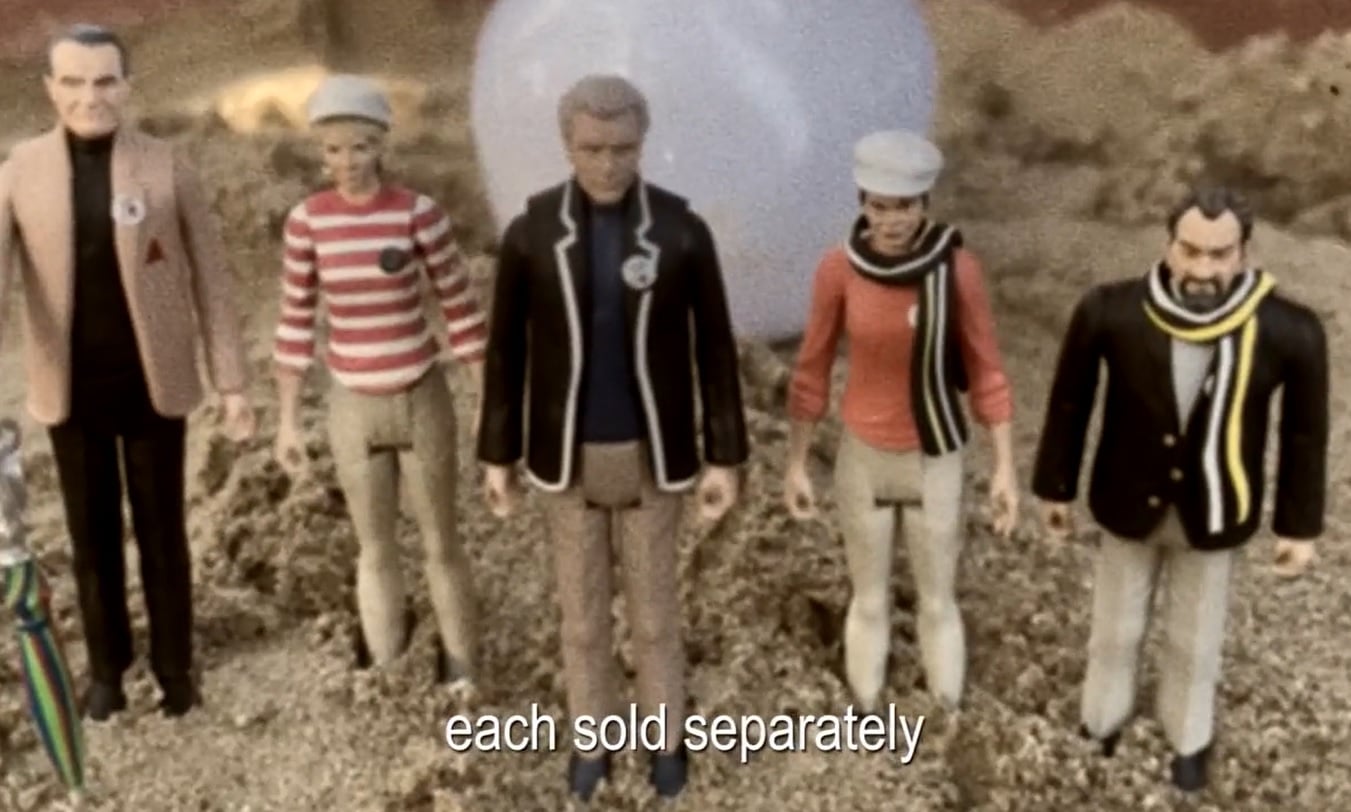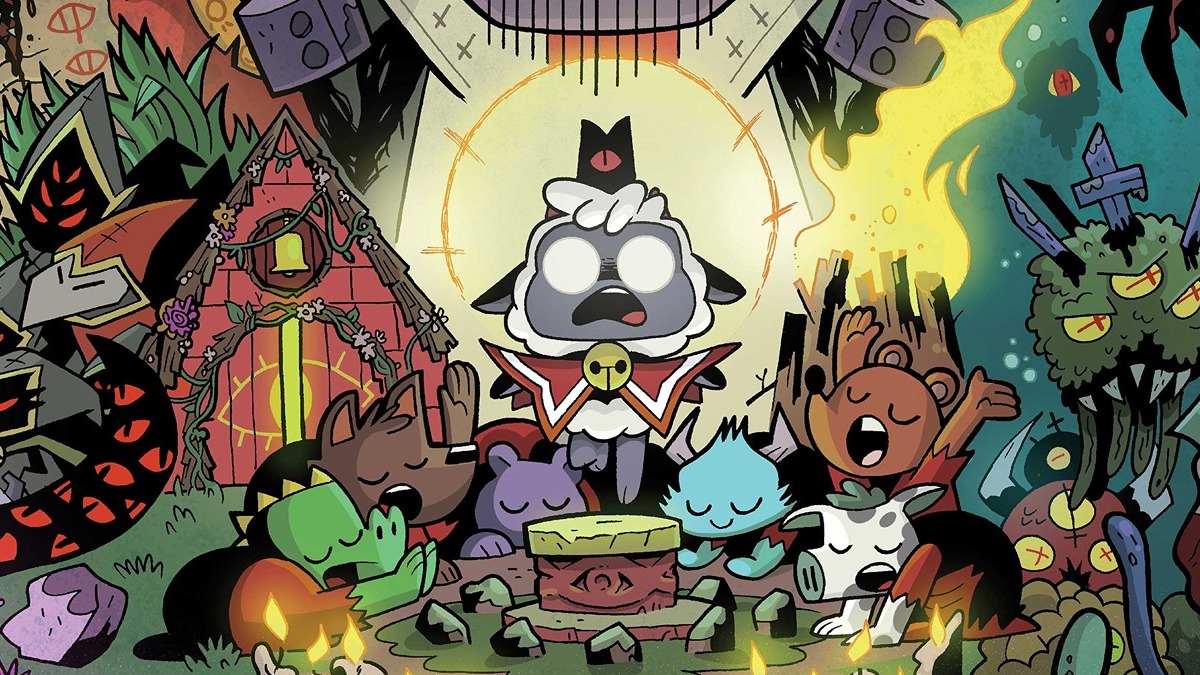From my perspective, Ryan K. Lindsay easily lists among the hardest working writers in comics. He could have been held back living in Australia, but he used his distance from the States as inspiration to run unique crowdfunding campaigns focused on digital rewards. Over the course of seven Kickstarters he has consistently delivering feature-rich digital comics for as little as a dollar and offering even more value for every additional buck you spend.
Even now that he’s writing comics for big publishers like Dark Horse and DC he’s continuing to self-publish smart, interesting material over Kickstarter. I previously spoke to him about his Kickstarter for the second volume of Deer Editor, but knew there was a lot more to learn from him. So we did another interview, this one about his current campaign for Headspace, my favorite work from him yet, discussing his experience with selling digital comics and perspective on their past, present, and future.
All artwork in this post by Eric Zawadzki, Sebástian Piriz, and Marissa Louise.
Headspace was originally distributed on ComiXology through Monkeybrain. How was your experience as part of a line of digital-first books?
I loved being part of Monkeybrain – they were such a titanic launch, and their titles were all amazing. There was a feeling that you’d try any #1 they put out because their line was curated for quality by Allison Baker and Chris Roberson. They were a dream publisher and I was floored we actually landed there.
How beneficial have you found distribution through ComiXology to be for yourself and other independent creators?
Look, I’ll be honest – I’ve found very little money there. I’ve gone through ComiXology Submit – and was very early there with my one-shot FATHERHOOD, which did relatively well – and I was there with Monkeybrain and in both avenues, the dollar signs are more like cent symbols. Now, this isn’t all about money, and the eyeballs you can get through those early days of Submit – before they got hundreds of comics submitted per week – was beneficial. I was a part of that first SXSW Submit bundle where the top 100 comics were sold for $10 – I think they sold over 5000 of those bundles so that helped on some level, so I appreciated the platform where you could be found. I’m not big on selling stuff through my site because it only helps people actively finding their way onto my site, but platform landing pads like ComiXology, and Kickstarter, and social media, mean you get the browsing eye. I appreciate that.
But it’s not a business model for me. I’ve had books on there for about 4 years now, and the number of cheeseburgers I could treat myself on those profits could easily be consumed in a week.
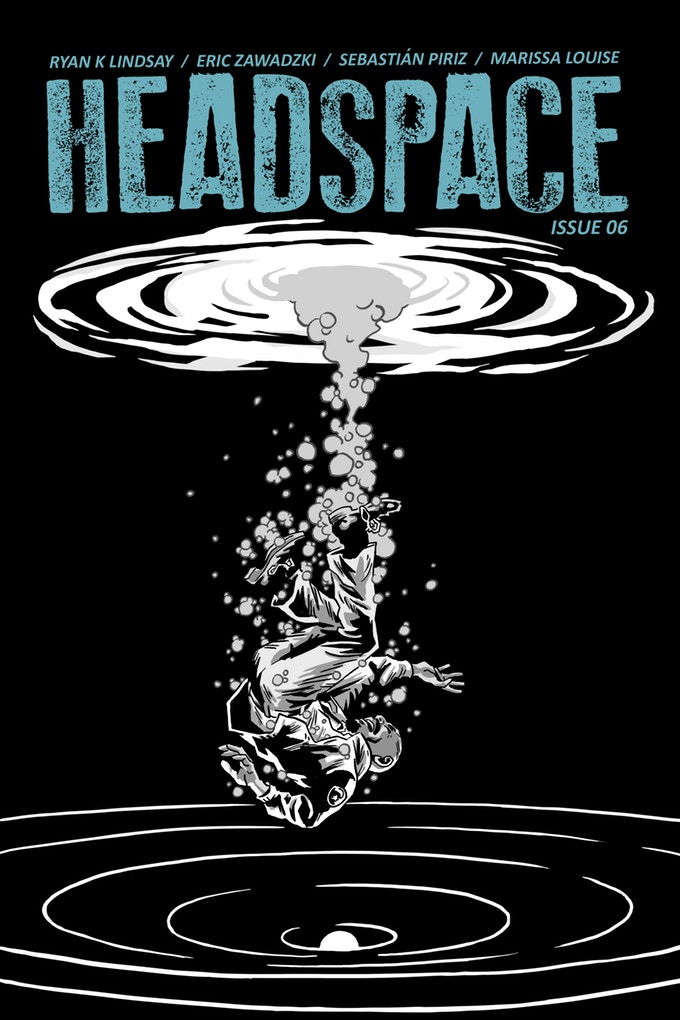
Do you think releasing issues of Headspace first digitally affected reception to the hardcover from fans and retailers?
Not at all, to be honest. I’m not even sure how much of that market crossed over. Perhaps people not knowing about the digital wouldn’t have known what the book was when the TPB was release, so that might have hurt us.
After your many successful Kickstarters you have a whole library of comics! Would you ever collect the one-shots you’ve Kickstarted into a larger volume, perhaps physical one?
I’ve thought about this, but I’m not certain what kind of market there is for that – specifically speaking about my one-shots, which are so disparate in theme and topic. We have emotional family drama to all ages fantasy romp, to all ages sci-fi, to really political nasty sci-fi. I don’t think they’d sit well together as a volume, so it’s not something I’m thinking to action at this stage.
You’ve said in previous Kickstarters the goals were to fund the art team’s hard work, but you’re working hard, too. Have you allowed yourself to earn anything for writing the comics and managing the crowdfunding campaigns?
I take some money. Not as much as I give to the art team, purely because the art teams assembled on a basis of trust and faith – that I would Kickstart to get them funded. I figure the time and effort spend in concocting these campaigns, then creating and managing them, and all the rest is still outweighed by the effort they all put into the page. In the end, I’m not Kickstarting to get paid anywhere near as much as I’m Kickstarting so I can make more comics in the future because collaborators might trust me on what the outcome might be.
A lot of fans seem more jaded about Kickstarters lately. How do you manage to sustain interest in your campaigns?
Are they? All I’ve seen is the percentage of successful Kickstarter campaigns in the comics field rising each year. I’ve seen mates and peers Kickstart more, and people rally behind these campaigns. I think people are jaded with the cash grabs, but the campaigns that are an engaged and interactive 30-day celebration are the absolute best. As is seeing people truly make stuff that won’t fly elsewhere – whether that’s strange formats, wide anthologies, or value-adding campaigns with custom toys, process material, soundtracks, etc.
For me, I just try to run the kind of campaign I would wanna get behind. I always say, if Matt Fraction offered any of the things I’m offering, I’d quick draw my wallet so fast it would be aflame. Now, I know I’m nobody’s Matt Fraction, but I want to put in the effort like maybe I could be. So I go in excited, I offer things that excite me, things I’d want to back, and I try to price these things appropriately and just make sure my backers leave the campaign with a great feeling about it all, and a tablet full of awesome reading material.
I believe Headspace is (in terms of page count) your biggest offering yet on Kickstarter. Are you excited to give your Kickstarter backers a chance to read a longer story than they usually get from you?
Absolutely! Because this is from the back catalog, I saw no need to parcel it up or make people jump through hoops for it. I wanted that basic pledge to be $5, get the whole story, and get all the Omnibus extras that make this one special to us.
In Headspace, learning where Shane is as he does is (in my opinion) the best way to experience the story, but it’s very hard to market a book without giving away the concept. How do you wrestle between needing to promote your work and letting readers be surprised?
This is always such a fine line to tread. You don’t want your sales hook to also be the hook at the end of your first issue – which, thankfully, this isn’t. Shane finds out where he is, but #1 ends with him discovering something else in there, too. But it’s always hard to know just how much to give away. This is why I often load up my #1 issues, so the premise is laid out in the first half of that issue, as we jump in media res, and then the characters find out something else, something bigger, and faces a hanging choice carrying over to #2. I want, out of a five-act structure, to get through two acts in that first issue, which means I write dense, and I don’t write those small three act introductions to characters where you see them face a problem, act against it, and resolve it as we meet them [like most cop stories where they are on a case that they solve and that’s our introduction and then the big case of the story peeks around the corner]. I cut all of that because I want readers immersed in the story/world/character, and I want them dying to see what choice is taken at the end of the issue. I hope it makes them more invested, rather than just giving them the character, and hinting at things to come and the reader has to think “Oh, well this was cool, I like the character, I hope the story starting next issue is just as good.”
Has the press from Kickstarting your digital comics led to other opportunities?
I truly don’t honestly know, but I don’t think it has. Creating stories at Dark Horse and Vertigo and Black Mask is a much bigger signifier to editors/publishers than Kickstarting, in my experience. Unless you’re titanically good enough to pull a HEADLOPPER or FIVE GHOSTS and transition it to other stuff, I think it becomes this side industry – and it’s one where I continually get to make these comics I love and have people support me, and have creative teams trust me, so it definitely feels worth it – but I don’t think it’s changing any minds at major publishing houses.
Though, in saying that, when I applied for the DC Writers Workshop, I submitted NEGATIVE SPACE #1 [Dark Horse] and DEER EDITOR #1 [a Kickstarter book] and I got selected, so I guess if the quality gets a moment to be seen then it can make a difference.
As a reader, do you have a personal preference between digital and physical comics?
I completely prefer physical comics. EXCEPT, when I back a Kickstarter, they’re usually not in Australia, so I don’t want to pay $20 for postage on a single issue, so I back almost exclusively for digital comics on this platform.
What are some interesting trends in digital publishing you’ve noticed lately?
The fact page length isn’t a problem, because they’re all just pages you design and fill, but don’t have to pay extra to “publish” because it’s all in the one file and there are no print costs, so people go crazy adding stuff which I love. I also love when people go ‘tablet view’ with landscape pages.
I’ve also seen people offer the comic as just inks or pencils, and that’s pretty damn awesome.
In your view, what’s the state of digital comics now? Has it become an increasingly viable platform or have you noticed things impeding its growth?
I think it’s grown to a pretty decent place. The more people use tablets as a form of carrying books and thoughts and worlds then the more perfect customers we have.
I think the profit margin on sending a file download link compared to posting a print comic you paid to get made is a galaxy apart.
I think people realised you can’t own 50 longboxes of comics and expect to maintain a home, and finding an issue by digitally searching is easier than trying to haul out Longbox Alpha and get to the right space for that issue.
But, in the end, comics is a medium build on the ‘totem’ of what you can hold, and I think that’s always going to matter. I know I personally went back from ebooks to novels for the books I truly love because I still want to own and shelve and hold that thing.
I think people are realising you can’t charge a premium for your digital comics if you want growth – which we’re seeing with Marvel putting those trade collections up for 99c, which is amazing.
I think once people have worked out what they want digitally and what they want in analogue, and are happy to go both ways, they’ll understand that some music is streamed through Spotify, and some they buy the gorgeous gatefold vinyl from a premier site, some games are apps, and some are deluxe board games with pewter figures that you share with friends, and some comics are pixels on a screen, and some are monthly stops at their LCS, and some are deluxe hardcovers for the shelves.
Follow Ryan K. Lindsay on Twitter, check out his website, and, most importantly, back his Kickstarter for Headspace.
Matt Chats is an interview series featuring discussions with a creator or player in the comic book industry, diving deep into industry, process, and creative topics. Find its author, Matt O’Keefe, on Twitter and Tumblr. Email him with questions, comments, complaints, or whatever else is on your mind at [email protected].


